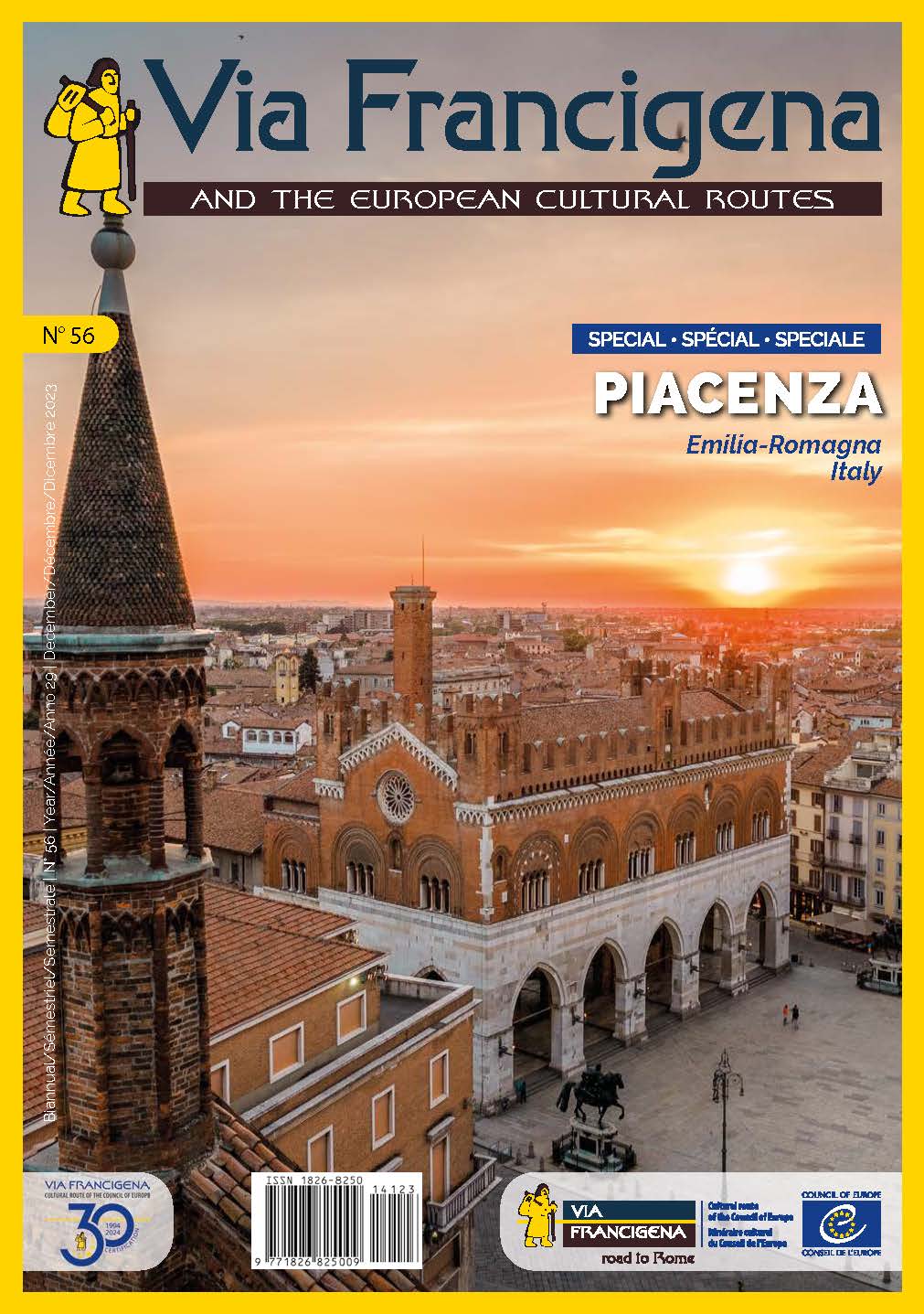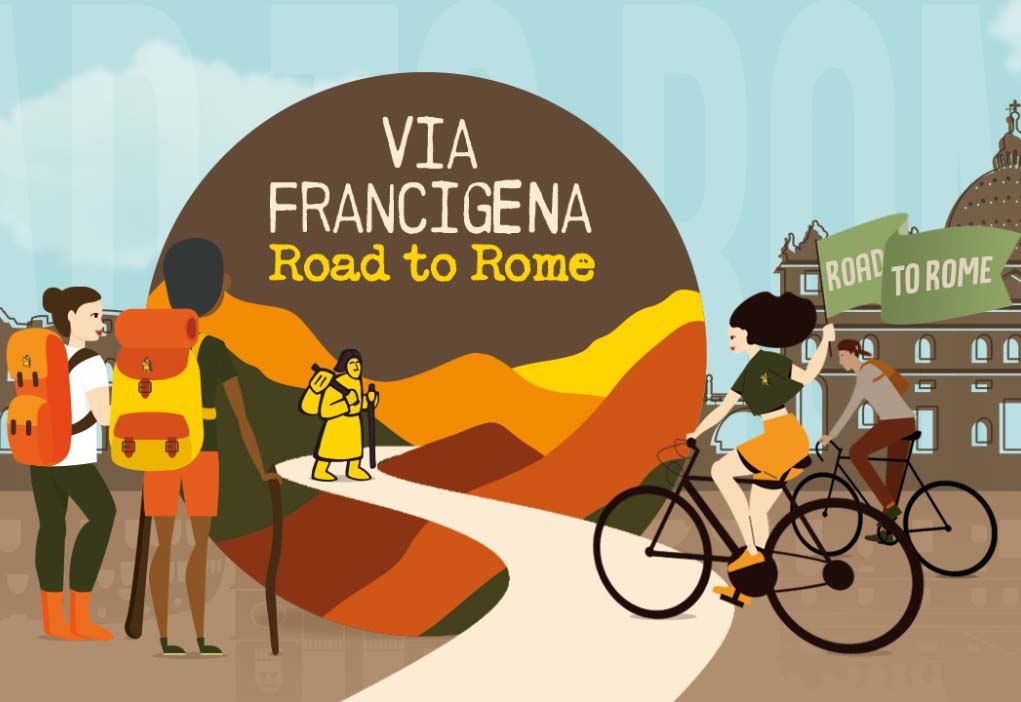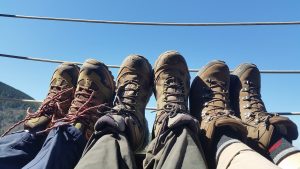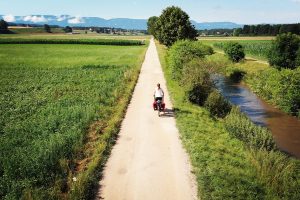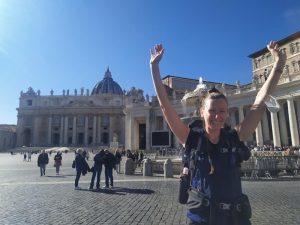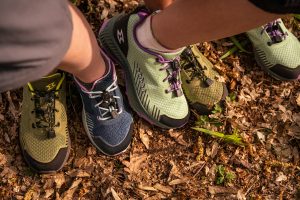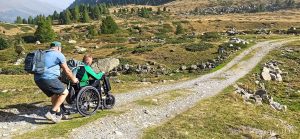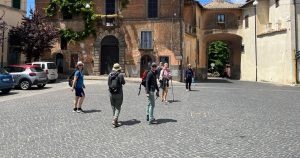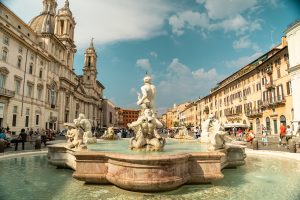After Puglia, the Campania region is the second chapter in our travel diary that tells the story of the entire Via Francigena route in celebration of the Jubilee 2025.
With its 3,200 km, the historic medieval route crosses five countries (England, France, Switzerland, Vatican City, and Italy), sixteen regions, and over six hundred towns, as detailed in the itinerary. Starting from Kent in the United Kingdom, it passes through the regions of Hauts-de-France, Grand Est, and Bourgogne-Franche-Comté in France; the cantons of Vaud and Valais in Switzerland; and the Italian regions of Aosta Valley, Piedmont, Lombardy, Emilia-Romagna, Liguria, Tuscany, Lazio, Campania, and Puglia. Finally, in Rome, it reaches Vatican City, a symbolic location for the Jubilee.
For these special regional guides created in collaboration with Regione Lazio, we decided to trace the Via Francigena from south to north, taking you with us to explore each region and immerse ourselves in its scenic, historical, and gastronomic beauty. Along the way, we will share plenty of travel tips on the route, featuring the best stages and interesting tidbits.
Are you ready to walk with us?
Let’s begin!
The Via Francigena in Campania region, in Italy, stretches for about 125 km, with 9 stages that cross scenic landscapes between history and nature. The journey begins in Sessa Aurunca, at the border with Lazio, and ends in Buonalbergo, an important crossroads from ancient times. The path, part of the Via Francigena in the South, presents moderate difficulty, with some sections featuring significant elevation changes, particularly in the hilly and mountainous inland areas. Along the route, you will encounter historic villages, archaeological sites, and reminders of the medieval pilgrims who passed through on their way to Rome.
Table of contents
- History and spirituality: A journey through Sessa Aurunca, Riardo, and the Arch of Trajan
- Culture: Legends and traditions of Benevento
- Nature: The hills of Sannio and the Campanian landscape
- Gastronomy: The flavours of Campania along the Via Francigena
- Ideas for walking routes for bank holidays or weekend getaway
- A few tips
History and spirituality: a journey through Sessa Aurunca, Riardo, and the Arch of Trajan
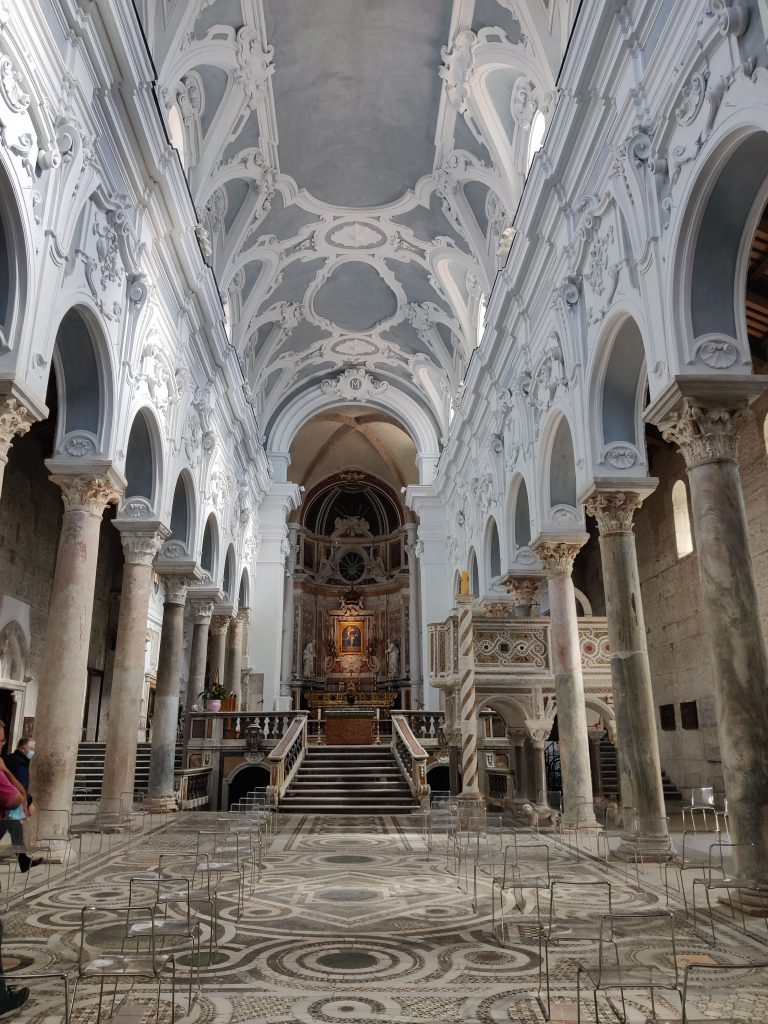
The journey through Campania intertwines history, art, and spirituality. A first stop is the Cathedral of Sessa Aurunca, a splendid example of Romanesque architecture, built between 1103 and 1113 and dedicated to Saints Peter and Paul. Inside, you will find bas-relief sculptures and Byzantine-style mosaics, enriching the artistic and spiritual value of the place. Also in Sessa Aurunca is the Roman theatre, built between the 2nd and 1st centuries BC, but only discovered in 2001. The theatre offers an extraordinary view of the Gulf of Gaeta, making the visit even more fascinating.
A short distance away is the Castle of Riardo, located in a medieval village, which has Lombard origins and dates back to 849 when it was built to defend the County of Capua. Later renovated under the Normans, the castle is a symbol of a territory that has experienced numerous dominations and conflicts but has also proudly preserved its cultural and spiritual heritage.
Lastly, in Benevento, a city rich in history, is the Arch of Trajan, erected between 114 and 117 AD to celebrate the opening of the Via Traiana, a variant of the Appian Way that shortened the journey between Rome and Brindisi. This imposing monument is a testament to the grandeur of ancient Rome and its infrastructure network. These sites offer an extraordinary panorama of Campania’s history, blending art, architecture, and age-old traditions.
- A little curiosity – Sessa Aurunca Cathedral
The marble of the Cathedral of Saint Peter tells biblical stories, from Genesis to the Acts of the Apostles. It also features representations of real and mythical animals, symbols of faith or fear, such as lions, dragons, griffins, snakes, and Jonah’s whale, creating a world that blends reality and fantasy.
Culture: legends and traditions of Benevento
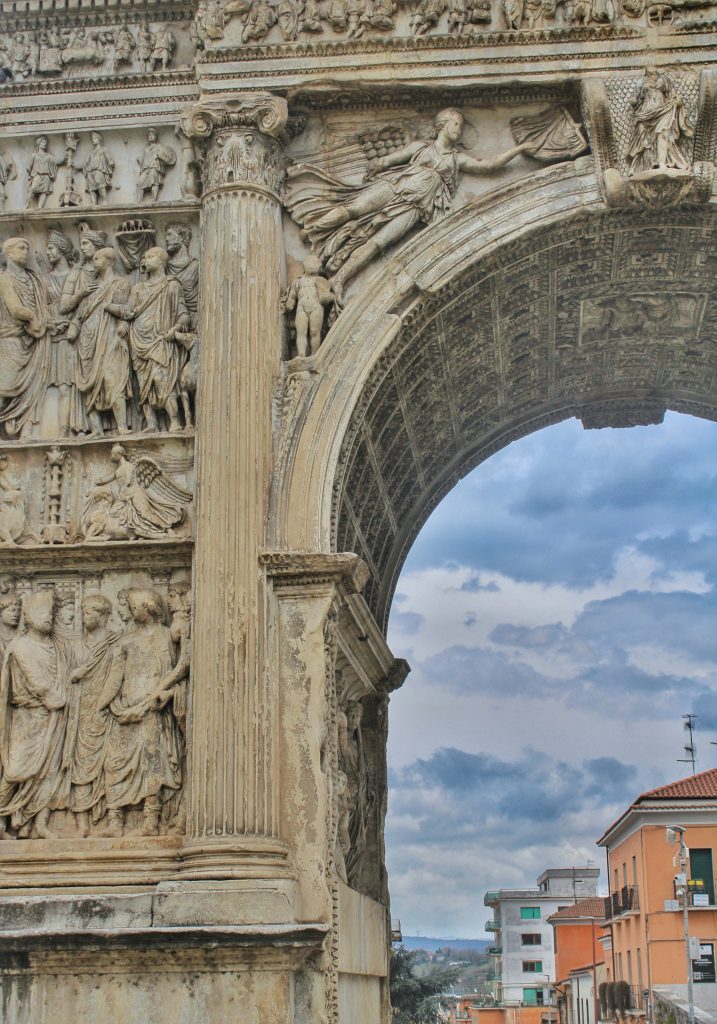
Benevento, located in the heart of the Campanian Apennines, is a city that has witnessed the passage of various civilizations, including the Oscans, Samnites, Romans, and Lombards. With its rich archaeological and monumental heritage, it is famous for its strategic location between the Tyrrhenian and Adriatic seas. According to legend, the city was founded by Diomedes, but historically its foundation is attributed to the Oscans, later dominated by the Samnites. During the Roman period, Benevento became an important colony due to the Via Traiana and its position along the Appian Way. After a period of decline caused by barbarian invasions, Benevento became a Lombard duchy and an important centre of the Church. The city later became part of the Kingdom of Naples, passing through various dominions during dynastic struggles. In 1860, following the Garibaldian occupation, Benevento became part of the new Kingdom of Italy.
From the Roman era, the Arch of Trajan and the Roman theatre remain, which could hold up to ten thousand spectators. There are also the baths of San Cristiano, the amphitheatre, and the Arch of the Sacrament.
The Lombard period is represented by the Church of Santa Sofia, built in 760, which, unique in its design due to the arrangement of its columns and its distinctive plan, is a UNESCO World Heritage site.
The town is located in a vast basin surrounded by hills. To the west, beyond the Vitulanese Valley, rises the Taburno Camposauro massif, whose peaks, seen from the city, resemble a reclining woman, known as the “Sleeping Woman of Sannio.”
- A little curiosity – The Witches of Benevento
Benevento is also known as the “City of Witches.” Pietro Piperno was one of the first to write about the witches of Benevento in his book “De nuce maga beneventana,” likely influenced by the pagan rituals of the Lombards. It is said that once, near the Leproso Bridge, there was a walnut tree where witches would gather to perform spells. Over time, the legends intertwined with the history of the Samentes tribe, forest worshippers. These beliefs became ingrained in local culture, as evidenced by the Annurca apple of Sant’Agata and the Strega liqueur, both linked to “magical” recipes. Today, places such as the Leproso Bridge, the Egyptian Obelisk, and the area of the Roman Theatre are symbols of the city’s magic. For those interested in the occult, the “Night of the Witches” celebrates these legends every year, offering a unique experience in the heart of Benevento’s magic.
Nature: the hills of Sannio and the Campanian landscape
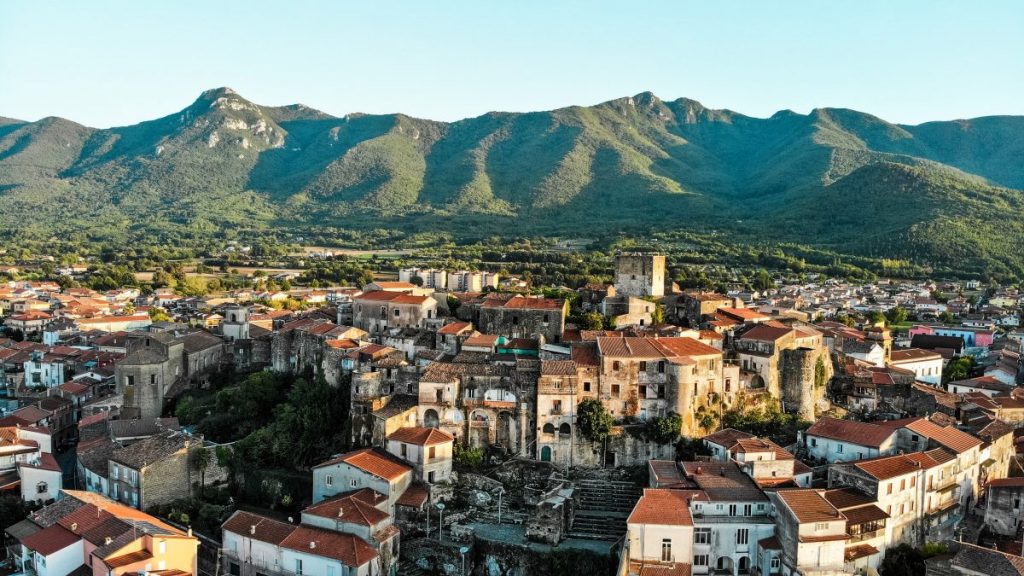
The section of the Via Francigena that crosses Campania offers pilgrims a natural landscape that harmoniously blends with the history and culture of the region. The Sannio hills, in the province of Benevento, with their gentle slopes, offer a breathtaking view. The name “Sannio” comes from the presence of the Samnites, who lived here in the 7th and 6th centuries BC. Here, among the green paths, one can breathe in the authentic and proud spirit of the local communities. Scattered across the mountains are numerous small villages, each with its own identity, inhabited by producers, restaurateurs, and artisans who preserve local traditions.
The path winds through gentle hills, dense woodlands, cultivated fields, and mountainous vistas, offering stunning views of the Campanian countryside. It passes through the Roccamonfina-Foce Garigliano Regional Park, with its chestnut and oak forests, and sections that follow rivers and valleys rich in biodiversity. The variety of ecosystems, combined with the presence of Mediterranean plant and animal species, makes this route an immersive experience in the unspoiled nature of Southern Italy.
Agricultural culture also plays a significant role in the landscape, enriching the journey. Over 11,000 hectares of vineyards adorn the land, and hundreds of wineries offer the chance to explore and taste some of the region’s finest wines. This path is not just a physical journey, but also a sensory one, combining natural beauty with local enological and gastronomic traditions, making each step an encounter with history, nature, and the authentic flavours of Campania.
- A little curiosity – Borgo San Lupo
Not only Benevento but the entire Sannio region is filled with myths and legends related to witchcraft. The Janare Bridge, located just outside the city in the village of San Lupo, tells the story of a beautiful girl who was accused of witchcraft by a rejected suitor and drowned by the villagers in the river. The legend suggests that even today, anyone who looks out over that bridge will be irresistibly drawn in by the girl.
Gastronomy: the flavours of Campania on the Via Francigena
When you think of Campania, one of the first things that come to mind is the food: while travelling on the Via Francigena, it’s a must to taste the local flavours encountered along the way!
Let’s start with pasta allo scarpariello, one of the most beloved dishes: a traditional pasta with tomato, garlic, chilli, and cheese—simple yet rich in flavour. This dish has its origins in the rural and humble world, where ingredients were few, but every family had its own secret variation.
- A fun fact: the name “scarpariello” comes from the term “scarparo”, meaning shoemaker, because it is said that this dish was consumed by manual workers, who appreciated its energy and simplicity. It was also easy to prepare, with ingredients always at hand.
When eating, it is a must to accompany the dish with a good wine, and Campania offers the perfect solution to satisfy us with the wonderful Aglianico del Taburno DOCG, a robust wine that tells the story of viticulture in these lands. Its rich and tannic flavour pairs perfectly with the region’s traditional dishes.
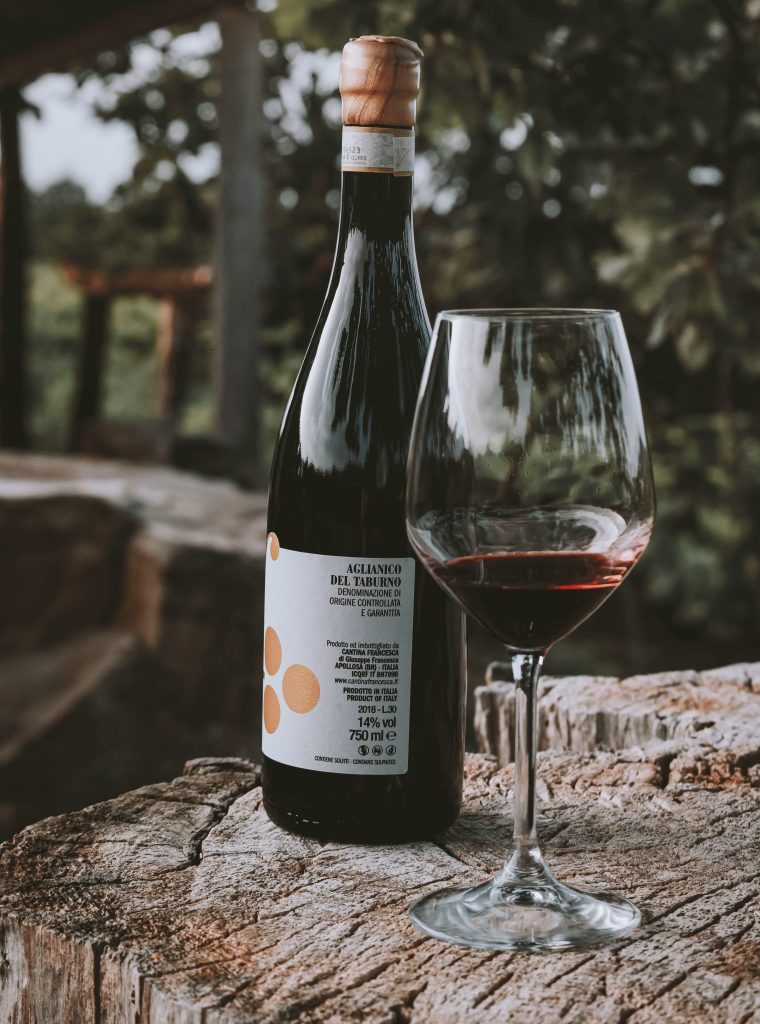
- A fun fact: according to tradition, Aglianico del Taburno was considered a “divine drink” by the ancient Romans. Some historians even claim that Emperor Nero was a great fan of this wine, which was already produced in the area around Benevento at the time.
Next, we come to dessert with struffoli, small fried balls covered in honey and colourful confetti. These are a must-try in Campanian patisserie, typically made at Christmas but loved in every season. Their preparation has roots in Greco-Roman tradition, and it is said that the ancient Greek populations introduced this sweet custom along the Campanian coasts.
- A fun fact: struffoli were prepared in noble households as a symbol of prosperity and abundance during the holidays. Even today, preparing them is a tradition that brings Campanian families together.
Lastly, another delicious treat to try along the Via Francigena is the torta mora. With its soft dough and the scent of orange, this cake represents the Campanian tradition and is the perfect way to conclude a journey focused on the pleasures of the table.
- A fun fact: it is said that the torta mora was born in a small bakery in Benevento, and that its name comes from the dark colour of the dough, which resembles the skin of a blackberry. Today, the cake is a symbol of Campanian pastry tradition and is prepared with love and patience during the holidays.
Ideas for Walking Routes for a Long Weekend or a Bridge Holiday
2-Day Itinerary (Alife – Telese Terme)
Day 1: The first day involves walking from Alife to Faicchio (19.3 km). The route begins in this city, located at the foot of the Massiccio Matese, a place surrounded by many legends. The path is mostly paved and relatively simple, leading us through the countryside until we reach the village of Faicchio, where the Castello Ducale stands proudly.
Day 2: The second day is also quite relaxing, with a simple walk of 12.5 km from Faicchio to Telese Terme. After crossing the Roman bridge, the path leads at the foot of Mount Acero, through woods, until we reach Telese Terme. This town is famous for its hydrothermal complex, which opened in 1883.
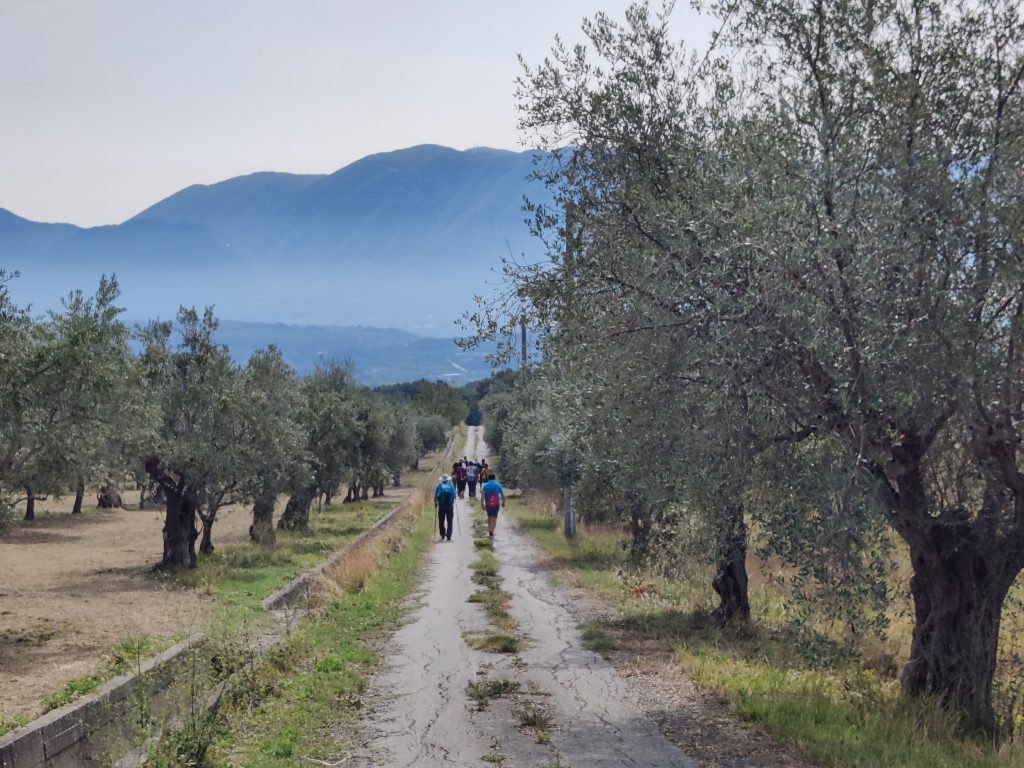
3-Day Itinerary (Minturno – Statigliano)
Day 1: We begin in Minturno, the last town in Lazio, heading towards Sessa Aurunca (24.2 km). Upon entering Campania, we are struck by the backdrop of the Apennines, with its mountain ranges and green valleys. Passing through cultivated fields, we reach Suio, where we can make a brief stop to admire the Church of Santa Maria in Peninsulis, built in 200 AD, and the thermal area. Finally, we arrive in Sessa Aurunca, the birthplace of the poet Gaius Lucilius, rich in history and architecture.
Day 2: The second day’s walk takes us from Sessa Aurunca to Teano (15.3 km). We leave Sessa Aurunca through one of the most scenic exits of the Via Francigena, descending through a green valley from the historic centre. The path leads us along the slopes of the dormant Roccamonfina volcano, eventually reaching Teano via the ancient Via Adriana stone road. Highlights include the remains of the Temple Theatre dedicated to Apollo, the archaeological museum, and the churches of San Paride ad Fontem and San Pietro in Aquariis.
Day 3: On the third day, the route takes us from Teano to Statigliano (24.6 km), mostly flat and paved, at the foot of the Monti Trebulani. Along the way, we pass through the medieval villages of Riardo, Pietramelara, and Roccaromana. We then reach the Torre Normanna, a tower built around 1100 and rebuilt after bombings, before arriving in Statigliano.
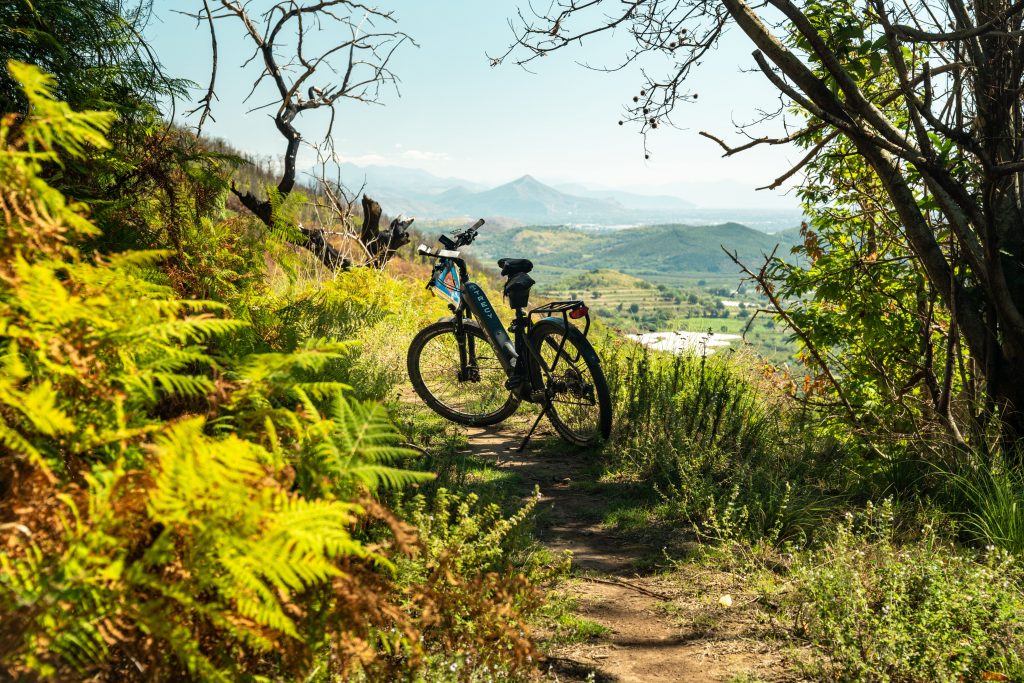
6-Day Itinerary (Teano – Benevento)
Day 1: The first day follows the same route from Teano to Statigliano (24.6 km) as described in the third-day itinerary of the 3-day route.
Day 2: On the second day, we walk from Statigliano to Alife (17.2 km), a short leg, although it is dangerous towards the end. It is recommended to take the train from Dragoni. We descend towards the Volturno plain, crossing Baia and Latina. Upon reaching Alife, we can immerse ourselves in its ancient history by visiting the Amphitheatre, the Criptoportico, the Forum, the Cathedral of Santa Maria Assunta, and the archaeological museum of ancient Alifae.
Day 3: On the third day, we walk from Alife to Faicchio (19.3 km), as detailed in the first day of the 2-day itinerary.
Day 4: The fourth day takes us from Faicchio to Telese Terme (12.5 km), as described on Day 2 of the 2-day itinerary.
Day 5: The fifth day’s route takes us from Telese Terme to Vitulano (16.1 km), a challenging leg due to frequent elevation changes. Along the way, we pass through Solopaca, famous for its DOC wines. In Vitulano, after enjoying a glass of Falanghina or Pecorino DOP wine, we can visit the Convento della Santissima Annunziata, founded by St. Bernardino of Siena, which houses an altarpiece he gifted, depicting the Annunciation.
Day 6: On the sixth day, the walk takes us from Vitulano to Benevento (17.2 km), mostly flat, from the Apennines to the Benevento plain. At the bottom of the valley, we encounter the Calore River, which marks the beginning of a long pedestrian and cycling trail leading to the outskirts of Benevento (for more information on Benevento, see section 2 “Culture: Benevento’s Legends and Traditions”).
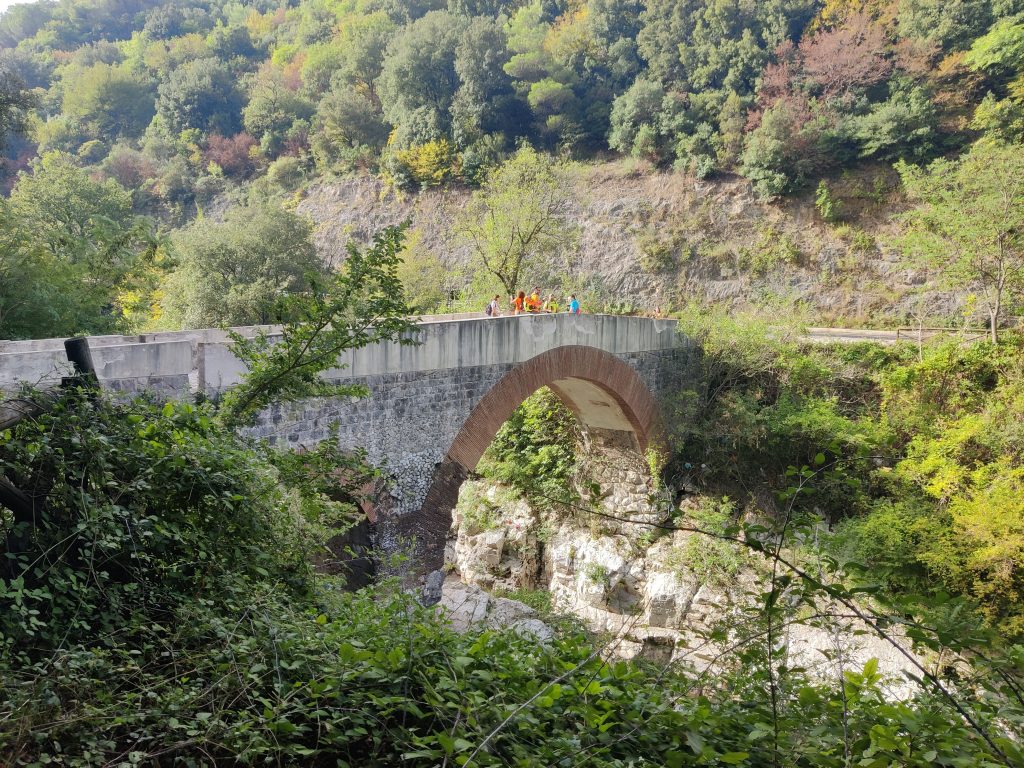
Some Tips
1. Prepare Your Equipment
- Hiking Boots: The choice of footwear is crucial, especially for long distances. Opt for robust and comfortable boots with good breathability and ankle support. Lightweight trekking shoes are ideal for longer routes. A tip: the heavier your backpack, the more important it is to choose shoes with high ankle support to prevent strain. Here some ideas form our partner Garmont.
- Backpack: Choose a comfortable, not too heavy backpack. Ensure it has adjustable straps and proper ventilation. It’s crucial not to overload it—aim for a weight that is 10-15% of your body weight and pack only the essentials. You can find them here, from our partner Ferrino.
- Clothing: Wear breathable, comfortable, and lightweight clothes. Depending on the season, pack a waterproof jacket for protection from rain or wind, and a hat or cap for sun protection. If you want here.
- Trekking Poles: These are very useful for reducing strain on your knees, especially on uphill or downhill stretches. Here they are.
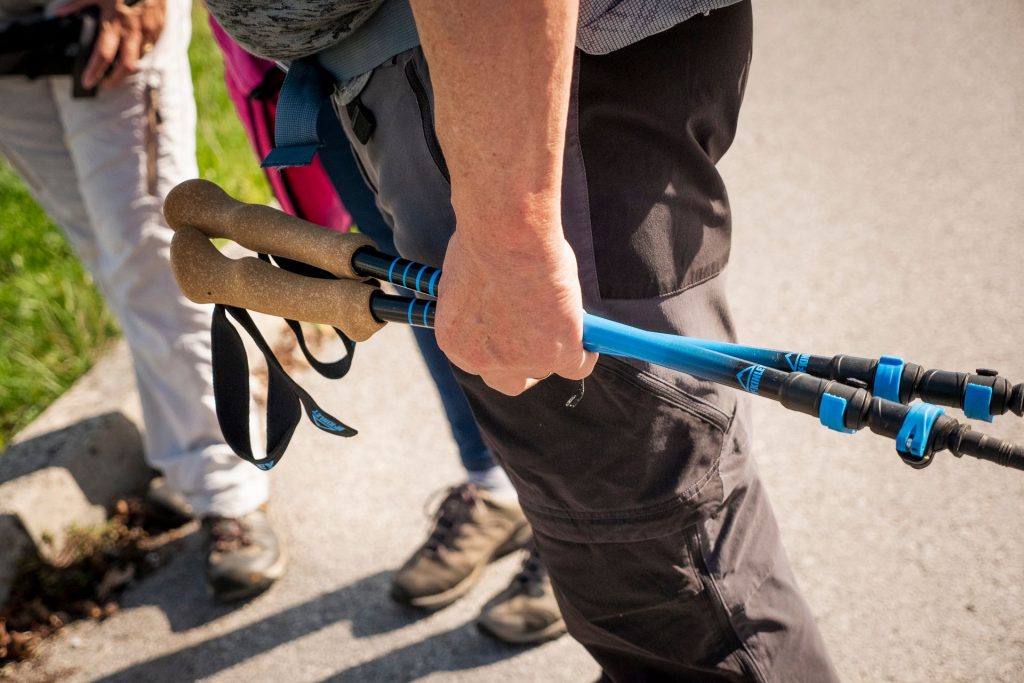
2. Plan Your Stages and Itineraries
- Distance and Time: Each day of walking covers distances ranging from 15 to 25 km. If you are not used to long walks, start with shorter stages. A good idea is to complete the itinerary over several days, depending on your fitness level.
- Where to Stay: Along the route, you’ll find numerous accommodation options, such as hostels, B&Bs, agriturismos, and convents. In some places, you can also stay in pilgrim refuges. It’s recommended to book in advance, especially during peak seasons (spring and summer).
- How to Reach the Region: There are many ways to reach Campania, but not all are eco-friendly or low-impact. To support your Via Francigena journey, we suggest taking the FlixBus or Trenitalia trains, both of which offer a 10% discount for holders of the official Pilgrim Credential.
- Flexibility: Not all stages are of the same difficulty level. Be flexible and, if necessary, adapt to the situation. Remember that the journey is not a race but a personal and spiritual discovery.
- Guidebook: To avoid any issues, we recommend carrying a guidebook, such as The Via Francigena in the South by Sandy Brown or La Via Francigena nel Sud by Terre di Mezzo, which offer detailed itineraries and helpful tips for navigating the journey smoothly.
- Credential: Every proper pilgrim carries one. Here is the official Via Francigena Credential, an essential companion to take along the route. It allows you to benefit from discounts, track your progress with official stamps from localities, and enjoy other privileges.
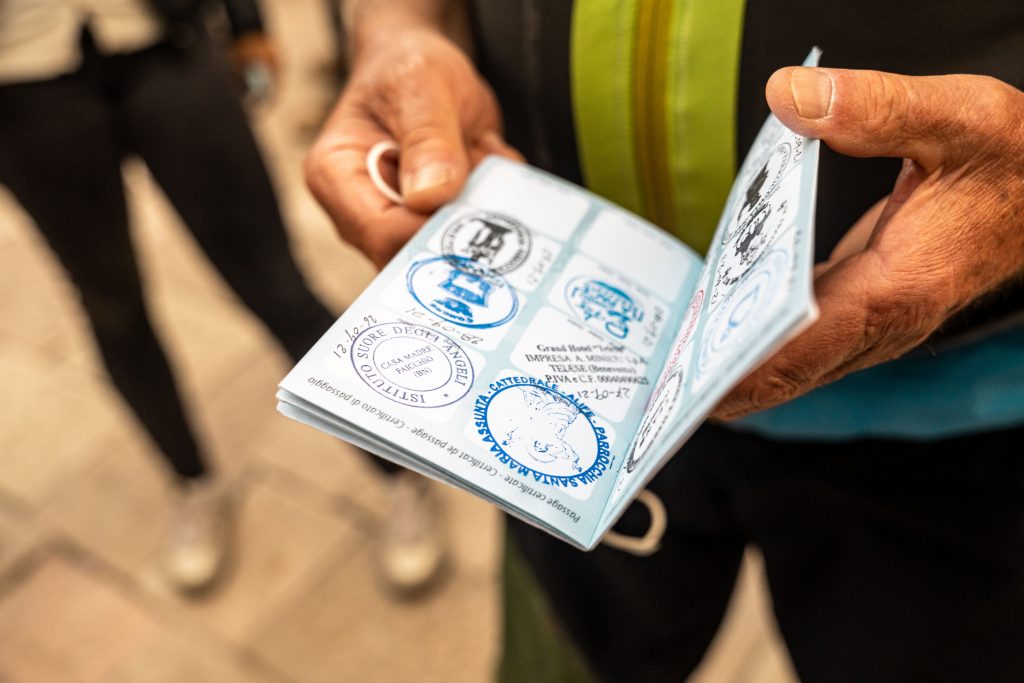
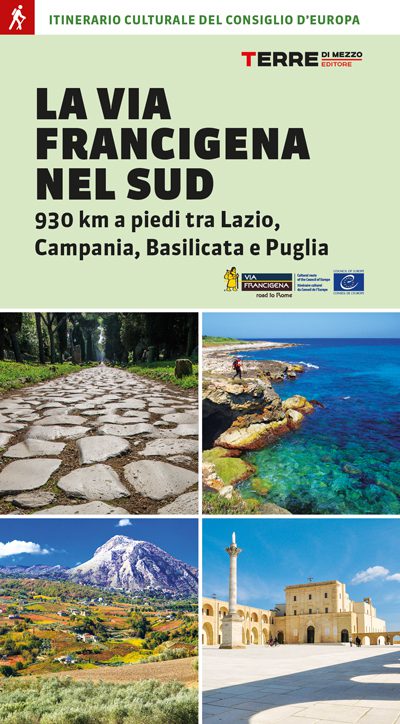
3. Safety and Health
- Water and Snacks: Always carry at least 2 litres of water with you. Some stages of the walk may not have easy access to water sources, so it’s important to refill at key stops. Don’t forget to bring energy snacks like dried fruit, cereal bars, and nuts.
- Sun Protection: The sun in southern Italy can be very intense, especially in summer. Use a high-SPF sunscreen, sunglasses, and a hat.
- Rest: Listen to your body. Take breaks and rest when necessary. Muscles and joints may suffer during the walk, so it’s important to take moments for recovery.
Published as part of the project intervention: Fondo Sviluppo e Coesione – Piano Sviluppo e Coesione by the Italian Ministry of Culture (Sheet 33 – Via Francigena – Cross-cutting Actions. Communication and Promotion Project).






